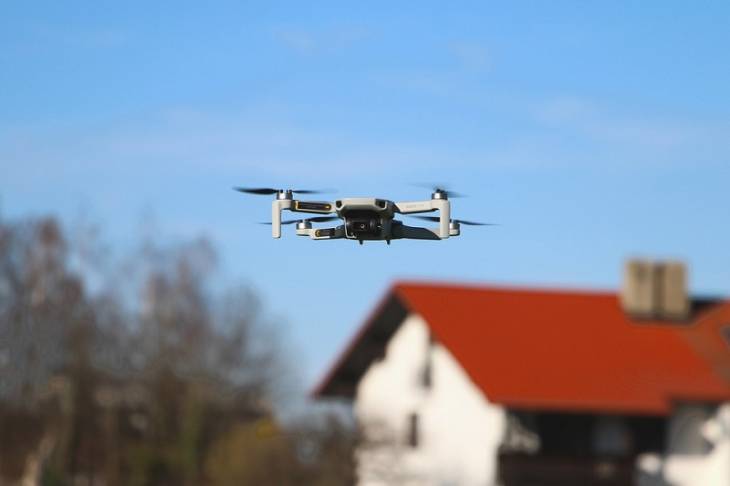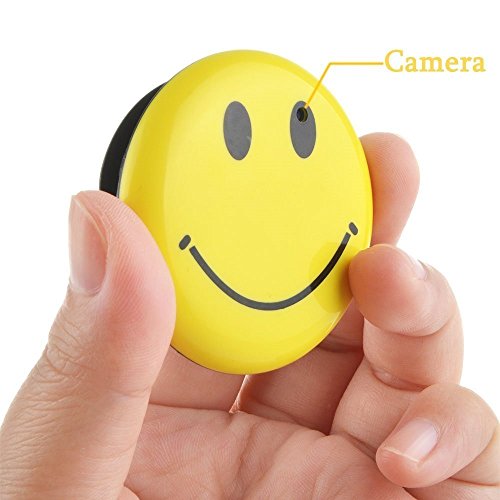Why Micro Cameras Are Used in So Many Industries Today

Micro camera technology has come a long way and is increasingly being adopted across many different industries.
Tiny, fully customizable cameras with super-sized applications are now developed and deployed across multiple industries, including scientific research and development, defense, aerospace engineering, heavy industry, medical, and home applications.
Such is the runaway pace of technological development that the micro camera market has achieved. It is now a bustling enterprise with near limitless applications.
Let's take a look.
Tiny Cameras as Spy Cameras
There is a little James Bond or Jason Bourne in every one of us, so they say. Spy cameras have long held sway as the must-have tech gadget for a number of reasons.
People like to know what's going on when they're not around, and when they are around. Spy cameras allow for precisely that. To be effective, a spy camera needs to be inconspicuous. Size matters. The smaller the spy camera the more effective it is at doing its job.
Often, these cameras are installed in other devices to focus attention away from their true function. Spy cameras in smoke detectors, remote controls, pens, chargers, lightbulbs, digital photo frames, and the like are readily available.

According to tech expert Mike Granich, spy cameras must perform superbly well with HD visuals, motion detection, real-time feeds, multi-device functionality, 360° panoramic views, remote viewing, night vision, et al.
It's a lot to ask for in a spy camera, but these types of devices are readily available and enjoying tremendous popularity among home users, and commercial users around the world.
Spy cameras can range in price from under $50 to hundreds of dollars, depending on the quality, functionality, and features of the device.
Micro Camera Technology in the Medical Industry
Dramatic advancements in medical devices, particularly endoscopy equipment is upending convention, delivering massive cost reductions, productivity improvements, and life-saving technologies for patients.
Medical imaging solutions with micro cameras are changing medical science in a big way.
Customized medical imaging devices allow for minimally invasive procedures with optimal precision, efficiency, and performance.
Nowadays, the world's smallest medical device camera measures just 1 mm, with illumination. This cutting-edge tech has innumerable benefits in the medical world, including wireless transmissions for operating room usage with zero latency for video transmission.
New-age micro cameras are resistant to magnetic fields, waterproof, and feature integrated illumination for HD imaging. The advent of the global pandemic has a fast-tracked a move towards single-use micro-imaging cameras ideal for eliminating infection and contamination, thereby allowing for reduced downtime and greater operational efficiency.
The top performing medical device cameras are capable of amazing functions, notably:
- Exploration for neurology purposes
- Integrated illumination for ENT procedures
- Diagnostic bronchoscope tools with robotic/surgical capabilities
- Unprecedented surgical applications with less invasive technology
- Massive advances in GI Sure technology with wireless cameras, including endoscopes/gastroscopes with highly advanced micro camera technology.
Space Exploration and Military Applications
The National Aeronautics and Space Administration (NASA) routinely uses micro camera technology in all manner of applications. For starters, there are micro-cameras installed in robotics systems and devices in space, on the moon, and on Mars.
Indeed, the first-ever micro camera to be operational in space was the ScoutCam micro-camera with fiber optic illumination. There are currently micro cameras in orbit on NASA's robotic refueling mission 3 at the International Space Station. This particular micro-cam offers 100 degree views with 1 mega-pixel resolution.
From a military perspective, micro-camera technology enjoys widespread usage. These types of camera systems are used for defense and security applications. Micro surveillance gear provides enhanced visualization necessary for law enforcement, drones, night vision, motion detection, inspection, and transmission of visual feeds.
Micro-cameras in military applications must comply with the strictest waterproof construction requirements, reliable power requirements, and effective transmission mechanisms. They are built tough, with strong resistance to radiation, vibrations, magnetic fields, temperature fluctuations, and vacuum too.
Micro Cameras in Industry
Robotics is but one component of the new-age industry that requires micro-cameras for maximum functionality. Micro inspection cameras have near-limitless applications particularly in hard-to-reach spaces. Multiple micro cameras can deliver stereo vision, with a choice of 2D or 3D measurements, object detection, and defect detection/quality assurance checking.
It is possible to deploy remote type and controlled visualization solutions from a distance to inspect all aspects of industrial capability, functionality, and performance. Given that these micro cameras can withstand dramatic temperature extremes from 100°C down to -127°C, they are ideal for many industrial applications.
One of the less conspicuous benefits of micro cameras in industry, given their level of technological advancement, is the predictive maintenance functionality that is assured. This cut costs, and ensures uptime and optimal performance.




















